Archived Storm Damage Blog Posts
Spring Storms and Weather Events in the United States | SERVPRO® of Maury/Giles Counties
3/14/2022 (Permalink)
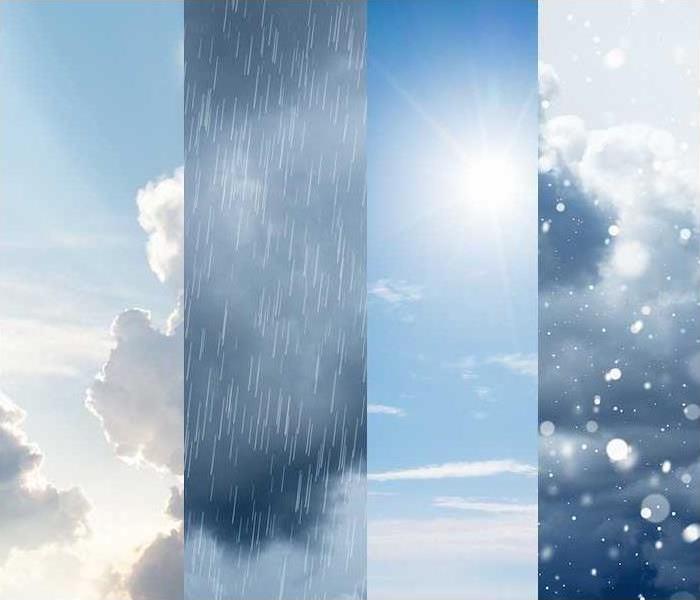 Extreme temperature changes can lead to severe weather. SERVPRO of Maury/Giles Counties is a click away if you experience any damage.
Extreme temperature changes can lead to severe weather. SERVPRO of Maury/Giles Counties is a click away if you experience any damage.
The United States, being one of the world’s largest countries in the world, has a tremendously diverse and expansive landscape. As a result, seasonal weather here is not one-size-fits all—different sections of the nation encounter different weather patterns, which results in variable degrees of weather threats for various regions.
Let’s examine the weather patterns that may occur as spring approaches and warm and cold air masses collide throughout the country—and also what we can consider here in Tennessee.
The spring months in the Pacific Northwest are prone to heavy rain, which may result in flooding and water damage. Snow will continue to accumulate at higher elevations, and the melting and runoff associated with it can bring problems of their own.
The Upper Midwest and Northeast have the longest duration of winter, and will see frigid weather throughout the season. From Maine to the Dakotas, folks can expect cold weather and the possibility of blizzards and heavy snow even until late spring or early summer.
On the other hand, the Southwest and southern West Coast will need to keep an eye out for extreme heat waves that can damage lives and property. The South Pacific region, including Hawaii, will be on high alert for the possibility of tsunamis produced by tectonic activity.
The central United States, from Iowa to Texas, will also need to be on the lookout for windstorms, derechos and the potential of wildfires, which may spread rapidly when winds are high and conditions are dry. A notable portion of this area is Tornado Alley, which is especially prone to tornadoes.
Finally, here in the Southeast, we can expect to have a wide range of severe weather events, from thunderstorms and tornadoes in landlocked areas to early-season hurricanes along the coast later in the spring. In Middle Tennessee, late-season snow has affected several areas.
Wherever you live in the United States, extreme weather is a possibility. While it may vary from state to state, it never hurts to be aware of and prepared for severe weather.
If extreme weather leaves you with damage from water, fire or other elements, help is a click away. Contact SERVPRO for fast, expert recovery.
Business Management: Preparing for Disaster
2/5/2022 (Permalink)
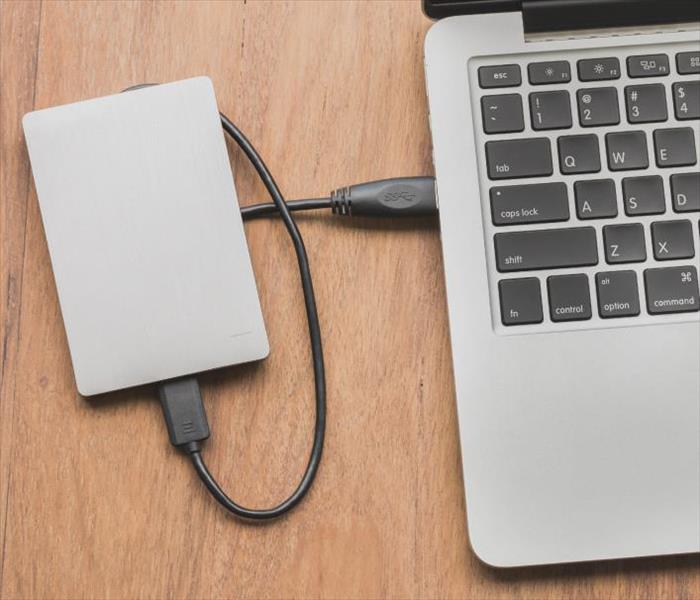 Keep back up of all data.
Keep back up of all data.
Disaster Preparedness
Disaster preparedness is an often overlooked element of business. However, knowing how you will react in an emergency has a lot to do with survival and, essentially, business preparedness. Without a definitive and well-executed plan, you potentially risk losing your business in the weeks and possibly months following a disaster. To ensure the survival of your company, make sure you at least understand the four essential elements of disaster preparation.
1. Know Your Insurance Policy
It is not enough to know that you have insurance coverage. You need to understand the extent and limitations of that policy so that you can make more informed decisions in the event of a disaster. Being intimately aware of your policy’s restrictions means that you can be better prepared for your financial obligations if an emergency should occur.
2. Contact Critical Vendors
Disaster preparedness mandates that you keep a list of all contacts pertinent to business operations. This list should have the information of all vendors critical to your services so that you can keep them in the loop. You don’t want vendors restocking your inventory at a facility that doesn’t exist anymore.
3. Keep Backups of All Data
If your building experiences a fire, you don’t want your company’s critical files turning to ash. Backing up all critical data via secure cloud services or off-site facilities is a great way to protect data from fire or water damage. There are companies called managed service providers that specialize in protecting digital information.
4. Develop a Response and Communication Plan
While a disaster restoration specialist in the Spring Hill, TN, area can help you create a response plan by assessing your business, you will need to create an effective communication plan with your managers and other critical staff. Response and mitigation are only part of the solution. As a manager, you must keep the business running even in the absence of a facility.
Disaster preparedness is a critical component of any business operation. When disaster strikes, your business cannot afford to halt altogether. Maintaining pivotal operations for your brand's survival is vital.
Don’t Wait for an Insurance Adjuster To Act After a Residential Flood
1/12/2022 (Permalink)
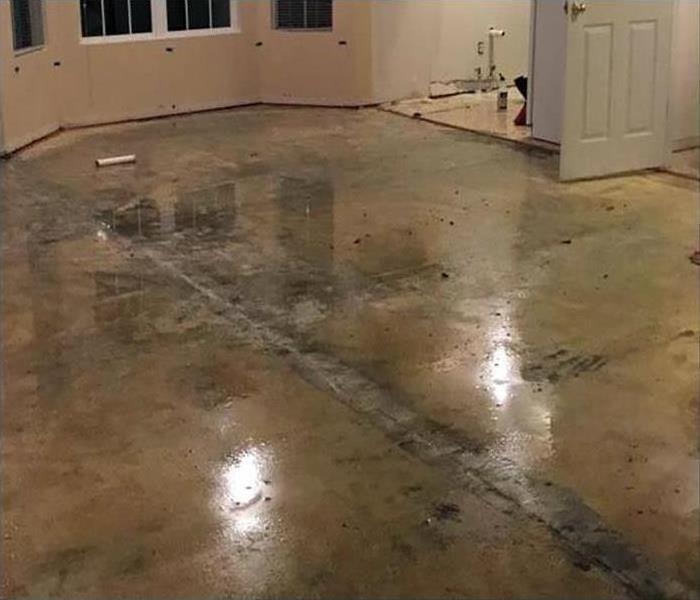 Storm damage cleanup in Lynnville, TN.
Storm damage cleanup in Lynnville, TN.
Three Reasons You Should Not Wate Time Following a Flood
No one wants to go through a home flood. Still, flood damage in Lynnville, TN, is more common than you might think. As you probably know, the hours following such an event are critical. If you wait for an adjuster from your flood insurance company before taking action, you may inadvertently allow more damage to occur. Here are three important reasons you should not waste time following a flood.
1. Water Gets Everywhere
Because it is a liquid, water can seep into parts of your home you may not think about. Even worse, sealed portions of your basement, crawl space and walls often prevent air from naturally drying moisture. If you wait for your adjuster to arrive before beginning water remediation or damage repair, the processes may be both more expensive and more invasive.
2. Mold Grows Fast
Part of the reason for having comprehensive flood insurance is to cover the cost of repairing mold damage. Like water, mold can grow in hidden parts of your home. Remediation experts have the knowledge, skill, experience and tools to quickly locate and address mold and mildew. Rather than waiting for an adjuster to inspect your home, working with a reputable service in the days following a flood is often your best bet to restore your home’s comfort, appearance and value.
3. Adjusters Are Busy
If broken pipes or backed-up plumbing caused your flood, your adjuster may respond quickly. On the other hand, if your home was part of widespread flooding, the insurance company’s representative may have a full schedule. In fact, you may wait weeks before your adjuster arrives. Remember, acting quickly is important, and waiting may cause more damage.
As a diligent homeowner, you carry flood insurance. You also likely have a duty to mitigate damage caused by rising waters. Rather than waiting until your insurance adjuster can inspect your home, begin the remediation and restoration process as soon as you can.
How To Choose Flood Coverage for Your Business
11/10/2021 (Permalink)
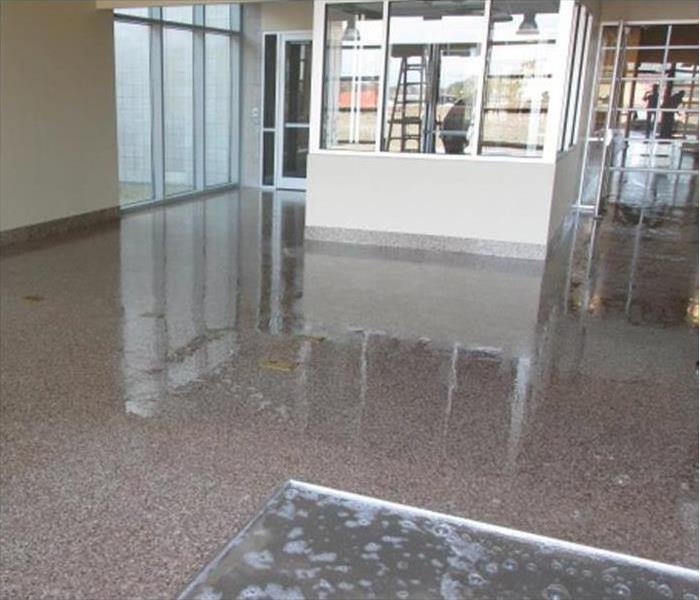 Stormwater in a Columbia, TN business.
Stormwater in a Columbia, TN business.
Flood Insurance For Your Business
The National Flood Insurance Program offers both building property and personal property flood coverage for businesses. If your business is located in an area prone to flooding, chances are that you are required to have some type of flood policy. Commercial insurance policies that are specifically designed to cover single-peril events provide protection that your general property insurance does not.
What It Covers
The main differences between building property and personal property flood insurance are the relative mobility and permanence of the damaged item or material. Items that are part of the structure or are hooked up to it in some way are usually covered under the building property policy:
- Building and its foundation
- HVAC system
- Plumbing and electrical systems
- Fire sprinkler system
- Installed design features such as carpeting or paneling
- Machinery that is a permanent part of the structure, such as a walk-in freezer
- Any apparatus attached to the outside of the building
Commercial insurance coverage for your personal property during a flood includes most items inside the structure. Furniture, appliances, rugs, inventory and equipment are typically covered under an NFIP policy through FEMA.
What It Doesn't Cover
Flood coverage is usually limited to a single event, the structure and the items within that structure. Secondary damage such as mold, which must be mitigated by mold remediation experts, is not covered under your company's flood policy. If the sewer backs up into your building, your commercial flood coverage does not pay for its cleanup, even if it was indirectly caused by flooding. Anything outside the building is not covered, and neither are the costs of keeping your business going. It's a good idea to talk to your insurance agent about adding policies that cover what the flood policies don't to your portfolio.
When your business in Columbia, TN, floods due to a storm or natural disaster, you will be glad you have a policy with the NFIP. These commercial insurance policies are designed to help make your business whole again.
Does My Business Need Commercial Flood Insurance?
6/14/2021 (Permalink)
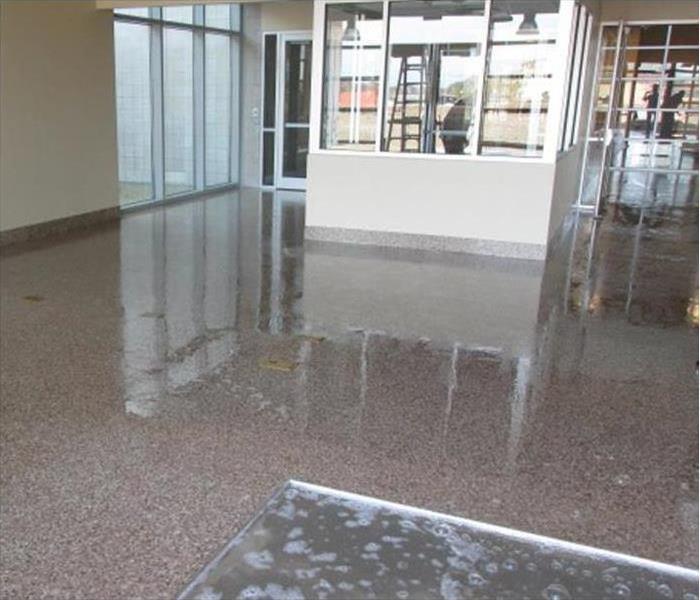 Stormwater inside a commercial building in Lynnville, TN.
Stormwater inside a commercial building in Lynnville, TN.
When business owners purchase a commercial insurance policy for their property in Lynnville, TN, they sometimes think they are covered in the event of a flood. However, most policies do not include flood insurance, and they must purchase coverage separately.
Am I Required To Purchase Flood Coverage?
Two factors determine whether you need coverage for floods. First, if your commercial property is in an area that is high-risk and prone to floods, and second, if you are paying a mortgage from a federally insured or regulated lender, you will need to have a commercial insurance policy for floods.
What Does Flood Coverage Include?
An insurance policy for flooding covers flood damage repair to your property and its contents in the event of a flood. It includes losses from:
- Prolonged or heavy rain
- Overflowing bodies of water such as streams or rivers
- Blocked storm drains
- Storm surge
- Melting snow
Water covering at least two acres or affects a minimum of two properties is defined as a flood for coverage purposes.
What Does Flood Coverage Exclude?
The property outside of your building, such as landscaping and septic systems, is not covered by insurance for flooding. Your vehicles are not covered by a flood policy, although you can purchase coverage in your business vehicle policy's comprehensive section.
Business interruption insurance is also a different type of coverage not included in a flood policy, as is the loss of use of an insured property.
How Can I Obtain Flood Coverage?
The National Flood Insurance Program, a program managed by FEMA, offers insurance for flooding through a network of insurance professionals and NFIP Direct. Your policy goes into effect after a 30-day waiting period, so it's essential to plan for coverage.
While flood insurance involves a separate policy, you can purchase it for your Lynnville, TN, property to ensure you are prepared if your property experiences a flood.
4 Ways To Prevent Damage and Prepare for a Winter Storm
3/30/2021 (Permalink)
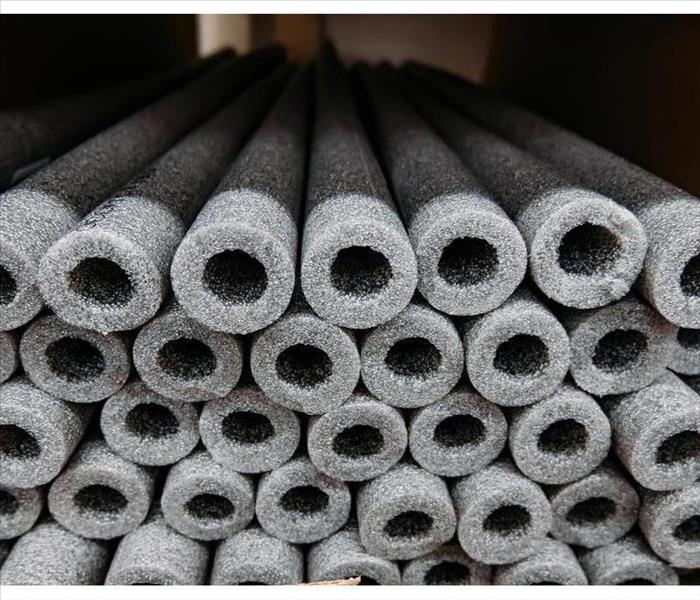 Insulate your building.
Insulate your building.
Ways To Prepare Your Business For Winter Weather
A winter storm can be beautiful, but it can also be a nightmare for your business if you are unprepared for it in Pulaski, TN. The heavy snow, wind and ice that accompanies the storm can cause severe damage and costly repairs. When these disasters happen, call your insurance company and a storm damage restoration service immediately to file a claim and begin repairs. While you cannot prevent a storm from coming your way, there are several steps you can take to prevent some of the damage from happening and mitigate loss. Here are a few ways to prepare your business for winter weather.
1. Insulate Your Building
Make sure your building is properly insulated. If temperatures drop below freezing, your pipes could freeze and burst, causing flood and water damage. Routinely inspect your building’s heating system to ensure it is working properly and keep the temperature above 55°F to avoid a pipe break.
2. Perform Regular Maintenance
Keep a regular maintenance schedule to make sure windows, doorways and the outside of your building are in good condition. Over time, building materials can wear down, allowing cracks and gaps to form which can reduce the structural integrity and insulation of your building and make it more susceptible to storm damage and flooding. In addition, you should routinely inspect your roof. Replace any broken shingles and make sure shingles are intact and firmly nailed down to prevent roof leaks and wind damage.
3. Stock Emergency Supplies
Create an emergency winter weather kit that includes snow shovels, ice-melting salt and a first aid kit in case a winter storm comes through unexpectedly. Keep non-perishable food items available in case you are stuck in your building overnight and cannot go home.
4. Watch Local Weather
During the winter months, stay on top of the local weather forecast. Start preparing early if a snowstorm is heading your way, and make sure your staff is adequately prepared.
A winter storm can cause severe damage if you do not take it seriously. Performing routine maintenance on your building and keeping an eye on the weather can greatly reduce damage and keep your business safe.
Reasons To Avoid Driving on Flooded Roads
1/15/2021 (Permalink)
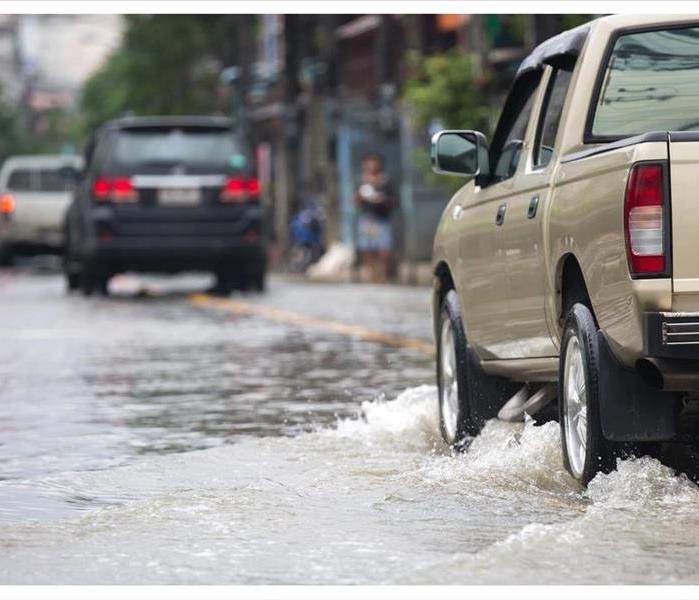 A simple flooded street can cause severe damage to your vehicle
A simple flooded street can cause severe damage to your vehicle
Reasons To Avoid Driving on Flooded Roads
Heavy storms and hurricanes are known for bringing damage and destruction along their path. In addition to strong wind and rain, flooding is also a serious concern when these storms hit in Pulaski, TN. A flooded street may seem harmless, but there are many reasons you should avoid driving through flooded areas.
Flooding and driving are a bad combination and can lead to:
- Losing control of your vehicle
- Your vehicle getting washed away or overturned
- Injury to you or your passengers
- Engine or electrical system damage
Looks Can Be Deceiving
Flooded roads are often more dangerous than they appear. Just 12 inches of rushing water is enough to wash a small car away, and 2 feet of water can sweep away larger vehicles such as a van or truck. Water can be deeper than it looks, hiding debris and downed wires that can pose a serious threat to both your vehicle and those inside it.
Stay Off the Roads
If a hurricane or major storm is moving through your area, it is always best to stay inside and wait until the storm has passed, rather than attempt to drive through a flooded street. If water is seeping into your home, call a storm cleanup and restoration service for assistance. They will remove water from your home and can help with repairs.
Evacuate if Necessary
If you need to evacuate for any reason, you should exercise extreme caution. Steer clear of areas with rushing or standing water and look up alternate routes in case your normal route is blocked off. Pack a bag with food, water, and clothing if you are unable to return home for a few days. In addition, it is always a good idea to research flood travel tips if flooding is common in your area.
A simple flooded street can cause severe damage to your vehicle and can put you and others around you at risk. Driving during a hurricane or heavy storm should be avoided whenever possible to ensure your safety and the safety of others.
4 Roof Maintenance Tips for Cleaning Gutters
11/11/2020 (Permalink)
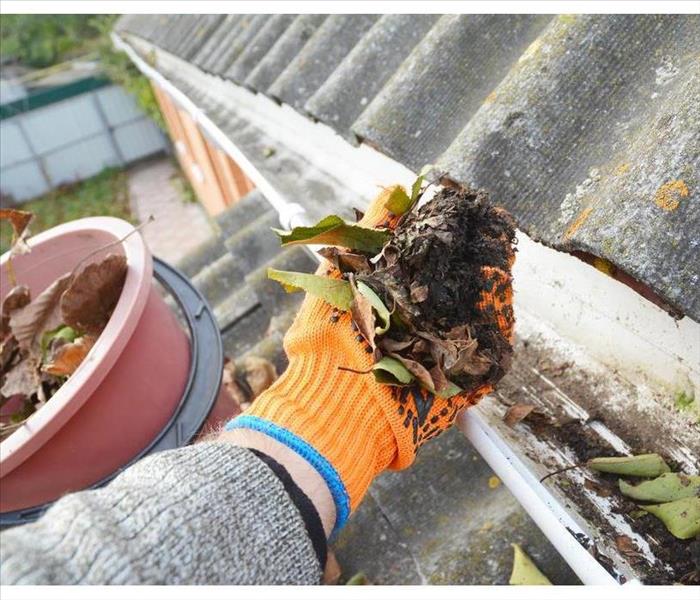 Remove debris from your gutter
Remove debris from your gutter
In some communities, public officials warn residents to clean their gutters, downspouts, and storm drains when rainstorms approach. When these are full of debris, there's a much higher probability of community flooding and reduced water quality. This part of roof maintenance is also vital to the well-being of your roof because it reduces the chance of a roof leak, rain, and wind damage.
Understand How Storm and Roof Gutters Work
If a buildup of debris has clogged the roof gutter, it prevents melting snow from running away from the edge of the building and is likely to cause a roof leak that damages the roof and connecting walls. Clear gutters remove and direct most of the water that reaches your building away from attics, walls, and crawlspaces. The cleaner you keep this path, the better water stays away from your foundation and building structure.
Perform Regular Inspections
The frequency of inspections is affected by the number of trees, shrubs, and insects surrounding your Lynnville, TN, property. You may want to begin by performing inspections each time the weather changes. Look for damage along the path of the gutters, along the downspout, and in the drain.
Clear Debris From Open Gutters
Much of the time, debris is removed by hand from the gutters by a person standing on a ladder. Depending on the size of your business and your budget, it may be wise to consider hiring a professional with specialized tools for this task.
Don't Neglect the Downspouts
Some property owners clean their gutters but neglect their downspouts. This can lead to a buildup of dirt, plants, insect matter, and sometimes mold. Use a mask to avoid unpleasant smells and specialized tools to avoid damaging these pipes from the inside.
Avoid a roof leak and services from your local property damage professionals while also protecting your standing in the Lynnville, TN, community by keeping your gutters, spouts, and drains clean. If you aren't sure you can do the maintenance yourself, contact a professional.
Flooding Cleanup Requires Safety Precautions
10/20/2020 (Permalink)
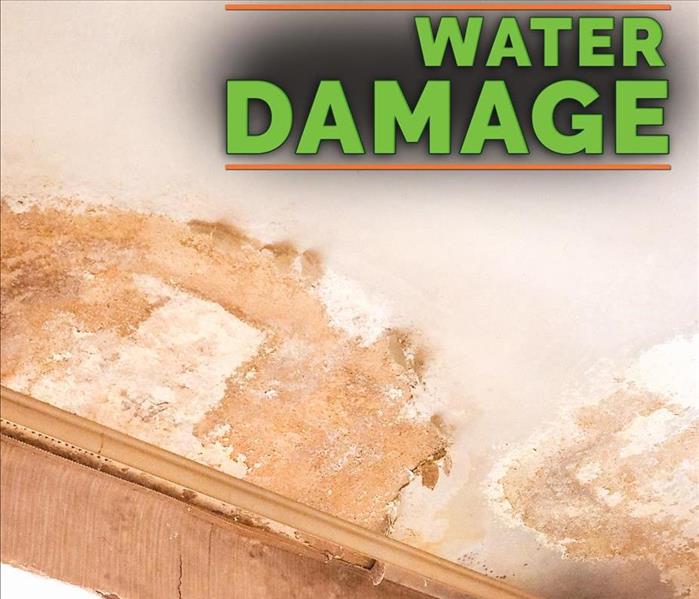 There are three categories of water damage
There are three categories of water damage
Although any type of flooding in your Spring Hill, TN, home can be overwhelming to deal with, not all flood damage is the same. Before diving in and tackling the mess, it’s important to understand the type of waters that have infiltrated your home to develop the best plan of action.
Water Categories
There are three classifications of water damage:
Clean Water – This type is considered safe and typically comes from a pipe burst, melting snow, rainwater, toilet holding tanks or another clean source that is free of potentially harmful debris or microorganisms.
Grey Water – This is water generated from showers, appliances and sinks that don’t contain fecal matter but my have potentially harmful contaminants if ingested.
Black Water – When natural flooding occurs or a sewer backup happens, it falls into this category. It is water that is ripe with fecal matter, bacteria, chemicals and other particulates that pose potential safety hazards.
Added Safety Measures
Once you know the type of water you are dealing with, you can determine the best way to get the cleanup process. If it is the third category, you will need much more than just a bucket and towels. Depending on the severity of the damage, the following PPE may be needed to start sorting through belongings:
- Watertight, electrically insulated boots
- Waterproof, heavy-duty work gloves
- Safety goggles and protective head cover
- Long pants and long-sleeves shirts or disposable suit
Since black water has contaminants, many of your belongings may not be salvageable. Even if items, such as furniture or drapes, seem to have minimal damage, water wicking up walls and absorbing into carpeting can quickly spread. To ensure more items are saved and the cleanup is done right, rely on the expertise of water damage and restoration specialists. They will have the know-how and tools to get the job done safely and the right way.
Instead of adding to the overwhelming situation by taking on the cleanup yourself, count on a professional that is Faster to Any Size Disaster.
The World's Long Struggle Against Flooding
9/9/2020 (Permalink)
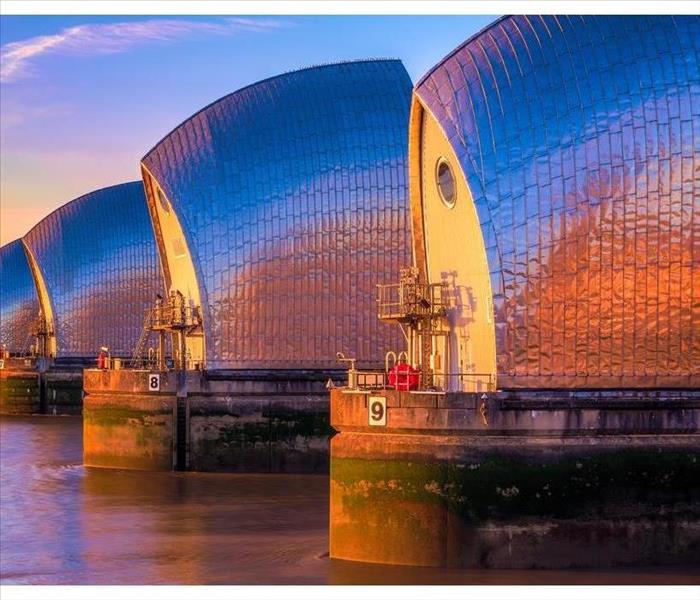 The Thames Barrier in England
The Thames Barrier in England
For eons, people have struggled against the sometimes overwhelming power of floods and high water. It is a particularly vexing problem, as damaging now as it was centuries ago. When waters rise, it is difficult to keep them from inundating lands, properties, homes, and cities. In just the past twenty years, the U.S. has seen major floods in Louisiana (Hurricane Katrina in 2005), the East (2006), Colorado (2013), and Missouri (2015). All of these events resulted in massive damage to properties both residential and commercial. Powerful countermeasures have been developed throughout the world in the hopes of holding the seas, oceans, and rivers back.
Major Flood Prevention Projects
Countries that build communities in low-lying areas often are most at risk. These are the regions that have constructed some of the most enormous engineering projects to hold back high water. The Netherlands has a number of such barriers, including the Maeslant Storm Surge Barrier, the Hagenstein Weir, and the Oosterscheldekering. Other large projects include the following:
- The Watergates in Japan
- The Thames Barrier in England
- The MOSE in Venice, Italy
These high-tech solutions are often what is needed to stop flooding on a large scale. They use barriers, hydraulic pumps, and moving gates to battle the powerful forces of water.
Serious Restoration Procedures
When a flood hits your company in Pulaski, TN, it is crucial to take quick action. A local storm mitigation company can arrive Faster to Any Size Disaster and begin the remediation process at once. A team of technicians will use specialized equipment such as vacuums and fans to remove water and dry out walls and carpeting. The workers will replace heavily-damaged areas of your building and restore items that can be cleaned and saved. They are trained in a variety of techniques designed to restore your company back to its original condition. They know that high water can cause a lot of damage to a commercial building, especially if a cleanup is delayed.
Best Practices for Cleaning After a Flood
8/7/2020 (Permalink)
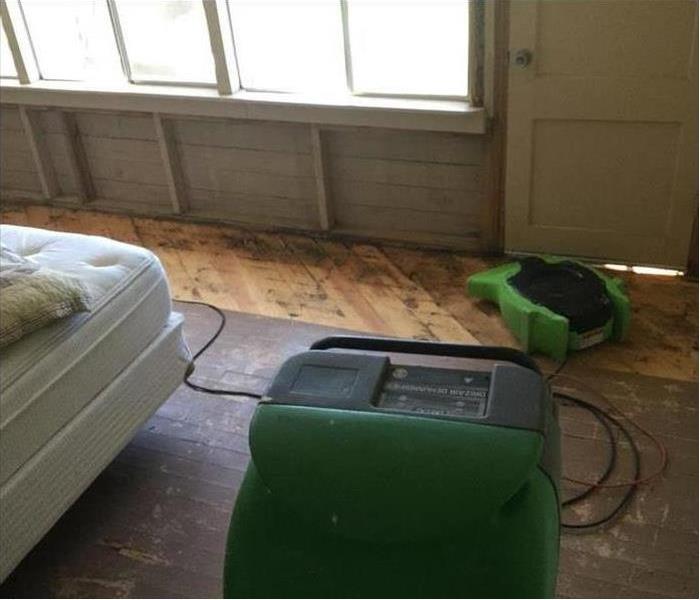 Storm cleanup in Lynnville, TN
Storm cleanup in Lynnville, TN
The myriad effects of a flood are not pretty. Whether you experience a powerful storm surge or the rising of a nearby body of water, a flood can leave mud, contaminated water and debris in various parts of your home. It can soak carpeting and upholstery and personal belongings and coat them with a stubborn layer of filth. The cleaning requirements after a flood are very specific and go beyond normal cleaning. A professional flood mitigation franchise in Lynnville, TN, understands the need for quality standards when cleaning flood waters. All elements and materials in a home are subject to damage.
Affected Areas of the Home
In addition to the normal suspects, a home faces damage in many areas after a flood. These unexpected areas include the following items, systems, and places:
- Electrical components
- Heating and cooling systems and ducts
- Appliances
- Drywall
- Insulation
- Mattresses
Due to the nature of a flood, special cleaning requirements such as a tear-out may be called for. This involves the cutting out of portions of drywall and insulation and replacing them with new materials. A powerful yet safe flood disinfectant will need to be used on any surfaces that the floodwaters came in contact with. Technicians will take their cue from leaders in the cleaning and restoration industry that establish high standards.
Additional Problems To Address
To get a house flood clean, trained technicians use the latest technology to locate high humidity and areas of mold growth. Some personal belongings and other household items will need to be thrown out. Odors often linger until the house is spotless. Tiny organisms can survive long after an area looks clean, so experienced technicians always follow the latest cleaning requirements. The use of approved antifungal and antimicrobial ensure bacteria and viruses are wiped out. Cleaning the damage and filth caused by a flood requires knowledge and special equipment.
4 Ways To Use Landscaping To Protect Your Home
5/1/2020 (Permalink)
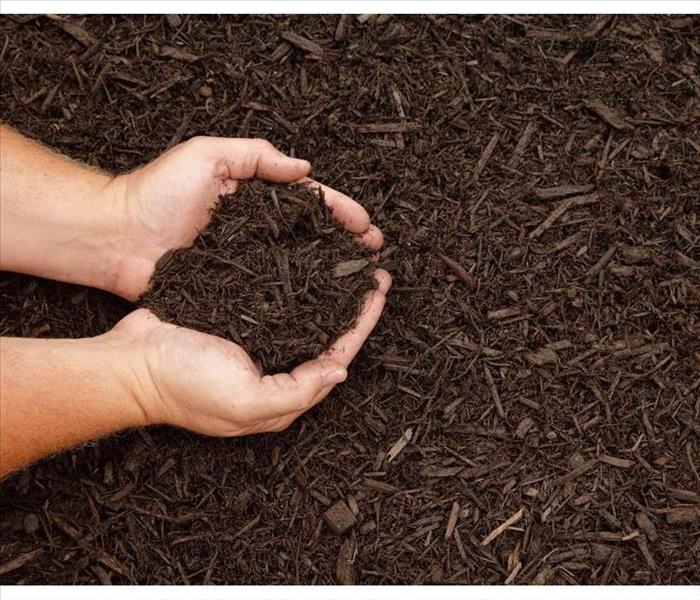 Mulch is a great way to keep the soil cool and damp, keep weeds at bay, and keep your foundation dry
Mulch is a great way to keep the soil cool and damp, keep weeds at bay, and keep your foundation dry
Four Ways To Use Landscaping
A wet basement can do more than ruin your weekend plans in Spring Hill, TN; it can lead to soggy heirlooms, unexpected repairs, and a date with your water damage mitigation company. Here are four ways to use landscaping to keep outside flooding where it belongs.
1. Rain Gardens
A garden is a beautiful way to soak up a rainstorm and keep water away from your foundation. Stick to native plants for the lowest maintenance garden project, and be sure to plant the thirstiest plants in its center. That’s where the most water will accumulate, so flora that requires less water should be placed along the outer edges to avoid oversaturation.
2. Swales
A swale is essentially a valley on your property that’s used to direct rain drainage to a more desirable location than your rec room. This lowland doesn’t stop outside flooding, however, so it’s critical to make sure your swale moves that flood water toward an area that can make use of it, such as the rain garden described above.
3. Heavy Mulch
Mulch is a great way to keep the soil cool and damp, keep weeds at bay, and keep your foundation dry. If your mulch material is too light, however, flood water will simply carry it away. This not only means an increase in flood potential, but also more raking for you. Opt for heavier mulch materials, such as stones or hardwood chips, and be sure to keep it at least six inches away from your siding to prevent moisture wicking.
4. Grass
Large, empty patches of dirt in your yard aren’t just an eyesore; they’re a liability. Your lawn needs grass — more specifically its roots — to drink up water and prevent flooding. For superior protection, don’t cut your grass too short, either, as it can weaken those thirsty roots.
Landscaping is one of your home’s best lines of defense against outside flooding. Use the contours of your yard and clever planting and planning to prevent water from entering your home.
3 Things Your Business Can Expect During a Storm Damage Restoration
4/12/2020 (Permalink)
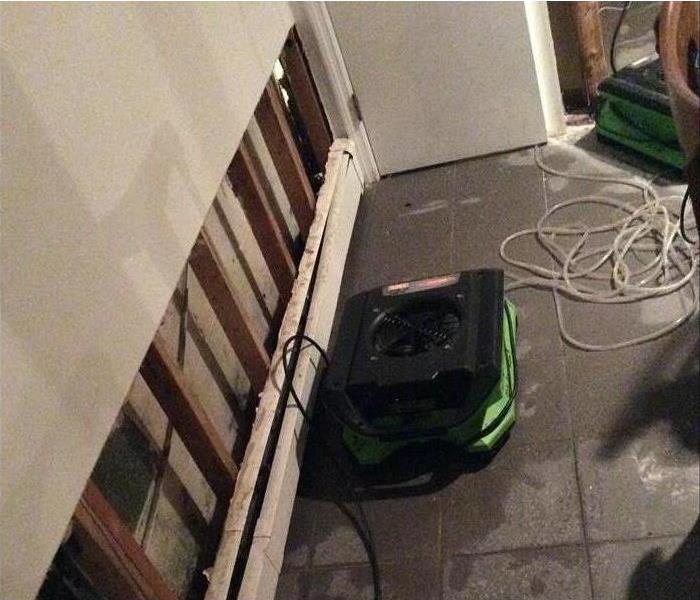 Perform a flood cut in Lynnville, TN
Perform a flood cut in Lynnville, TN
Three Of The Most Common Services
If your business in Lynnville, TN, has experienced storm damage you may be wondering what you can expect to see during the restoration. The damage restoration team working on the property may do a variety of things from water removal to a tear out of damaged materials. Here are three of the most common services you may encounter during the process.
1. Water Removal
If you have water from the storm, or other flooding, in your business the first thing you may see your local storm restoration service do is remove the water from the affected space. They may use pumps to get the bulk of the water and then squeegee the remainder away from the walls to be cleaned up with an absorbent cloth.
2. Wall Replacement
Another service you may see the restoration team perform is a flood cut or tear-out. This is a process in which wall space damaged by flooding is removed and replaced with new material. Typically the wall is cut a foot above the damaged area. Once the new wall portion is in the wall can be seam taped and repainted to look as if the damage never occurred.
3. Item Cleaning
One important thing to remember is that even items with water damage can be restored. This includes important office files and electronics. Mechanical items may need a professional to look them over but furniture or cloth items can be washed with a special cleaning solution and inspected for damage. Your restoration team may offer these item cleaning services, and may find that many more of your office items can be salvaged then you may originally have thought.
The restoration service working on your company property will most likely start with removing any remaining flood water. They may then perform a tear out to remove damage portions of any walls. Once repairs on the damaged space have begun you may also see them begin item cleaning. With a little time and work your business can be restored to pre-damage conditions.
Your Home In Columbia Can Be Restored By Our Skilled Flood Damage Specialists At SERVPRO
4/7/2020 (Permalink)
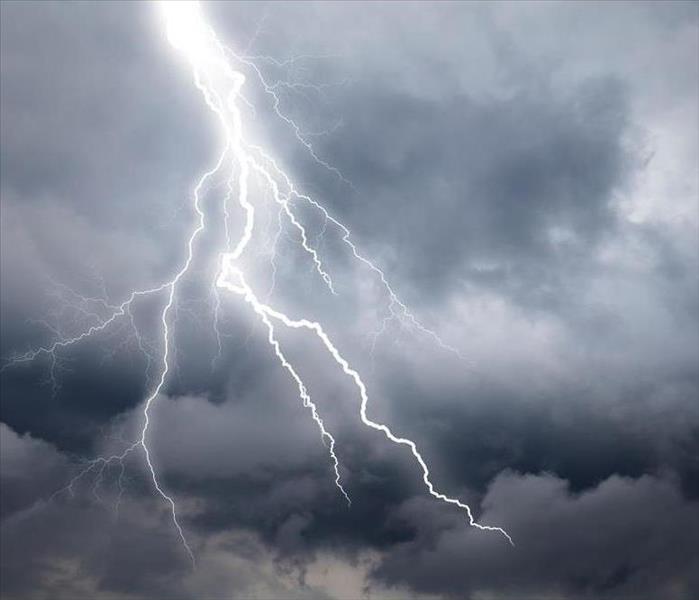 We can handle any sized storm damage
We can handle any sized storm damage
Fast Extraction For Floodwaters In Your Columbia Home
Natural disasters like flooding present several unique risks to your Columbia home and those that live inside it. Preventing these disasters can often be impossible, especially when conditions get met for creeks and streams around your home to rise beyond their banks and affect entire communities at once. The only choice that you have is to work as quickly as you can to get the right personnel to your property to begin mitigation work and the necessary steps to minimize the length and cost of time it takes to restore the damage occurring.
While you might have numerous concerns when floodwaters penetrate your Columbia home, the most pressing of these is removing the pooling water from the exposed areas of your property as promptly as possible. The longer that floodwater rests against materials and contents of your home, the greater the risk of contamination, bacterial growth, mold growth, and other biohazardous effects to occur. Our SERVPRO professionals are available 24/7 to respond quickly amid an emergency with extraction strategies that work.
Depending on the seriousness of the damage, our technicians might use one of several different types of extraction equipment to remove the excess water from your property. For severe situations, we offer truck-mounted pumps along with our SERVPRO Green Fleet of response vehicles to quickly remove this threat at a rate of 300 psi. Additionally, tools like our extraction wands, portable sump pumps, and weighted extractors can help to pull moisture away from vital structural components.
Removing the excess water from exposed areas of your property is important to allow the drying efforts to follow to happen quickly. Materials like drywall and carpeting must get removed from flood-damaged properties, but effective drying of structural elements like framing, studs, and beams can help to ensure that reconstruction takes less time and is less expensive overall.
While there are many concerns that a homeowner has when floodwaters begin to breach their property, the first reaction that you should have is to reach out to our SERVPRO of Maury / Giles Counties rapid response team. With our experience and industry-leading equipment, we can make flood damage “Like it never even happened.” Give our crew a call 24/7 at (931) 388-4248.
Click here for more about Columbia.
Flood Damage In Your Columbia Home Does Not Stand A Chance Against Our Team At SERVPRO
2/21/2020 (Permalink)
 Handling flood damage is challenging but enlisting the help of a professional eases the process.
Handling flood damage is challenging but enlisting the help of a professional eases the process.
Tackling Different Challenges After Flood Damage In Columbia
Flooded properties present several challenges including contamination because floodwaters collect all sorts of wastes including raw sewage and industrial chemicals. Depending on how high the water rises, they might affect parts of the structure and contents like upholstery. Restoration, therefore, involves different actions including teardown, cleaning, and drying of the affected areas.
Dealing with contamination after incidents of flood damage in Columbia is a matter of priority because the toxic wastes and microorganisms involved can lead to health issues. Our SERVPRO technicians rely on different resources to counter this problem. We spray an EPA-registered disinfectant immediately after arriving at the loss site. Our crews are also equipped with necessary PPE, personal protective equipment, eliminating chances of contact with the floodwaters. We have high-speed truck-mounted water extractors and pumps to remove standing water from the loss site fast.
Salvaging items after property floods is a race against the clock because when items remain submerged for long, the likelihood of saving them dwindles. Some materials, especially the porous ones, cannot be saved because contamination spreads beyond the surface where cleaning action may not be sufficient. Our SERVPRO crew separates items into different categories establishing what to salvage or throw out immediately. We clean the non-porous items using professional cleaning agents to eliminate soiling and contamination.
Proper drying of the affected structure is necessary to prevent secondary problems like mold, rot, among others. The threat of mold is remarkably high because it starts growing within the first 48 hours of exposure to excessive moisture levels. Our SERVPRO teams utilize different techniques when drying the structure. We have high-speed air movers to direct airflow because air circulation is one of the most critical aspects of drying a structure. We also have a variety of dehumidifiers to handle different stages of the drying process. Our crews also bring portable generators to supply power to the drying equipment ensuring that the process continues even if there is no power from the mains.
Handling flood damage is challenging but enlisting the help of a professional eases the process. Call SERVPRO of Maury / Giles Counties to help. You can reach us at (931) 388-4248 any time. We’re Faster to Any Size Disaster!
Click here for more about Columbia.
 Extreme temperature changes can lead to severe weather. SERVPRO of Maury/Giles Counties is a click away if you experience any damage.
Extreme temperature changes can lead to severe weather. SERVPRO of Maury/Giles Counties is a click away if you experience any damage.



 24/7 Emergency Service
24/7 Emergency Service













